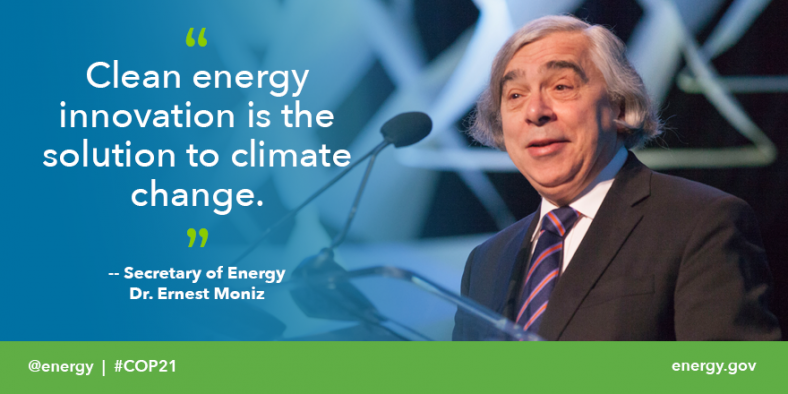World leaders gathered in Paris last week for the 21st UN climate conference, known as COP21. At the meeting, U.S. Energy Secretary Dr. Ernest Moniz highlighted several solutions to reduce carbon emissions, including launching a Climate Energy Ministerial initiative to encourage the adoption of LED bulbs worldwide.
Under the Global Lighting Challenge, the ministry will launch a race to reach accumulated global sales of 10 billion high efficiency lighting products including LEDs. According to Moinz projection the global initiative could cut carbon dioxide emissions equivalent to emissions by nearly 250 coal-fired power plants. More details of the lighting plan will be revealed Tuesday.
 |
|
(Photo courtesy of DOE) |
In late November, the DOE also scaled up its investments in green energy R&D solutions. Among the 41 cutting-edge energy technologies awarded by DOE’s Advanced Research Projects Agency-Energy (ARPA-E) that totaled $125 million, one of the listed projects was The University of California, Santa Barbara low cost laser-based, solid-state lighting module, which received a grant of US $2.37 million.
The University of California, Santa Barbara project aims to solve LED’s light depreciation issue by replacing it with more efficient and powerful lasers that could improve energy efficiency by a factor of two, and cut costs by about 20 times compared to current LED technology.
In either case, the DOE's recent strategies highlight the importance of efficient lighting in combating carbon emissions, and reducing the impact of climate change.












